MoMA: How Should We Live?
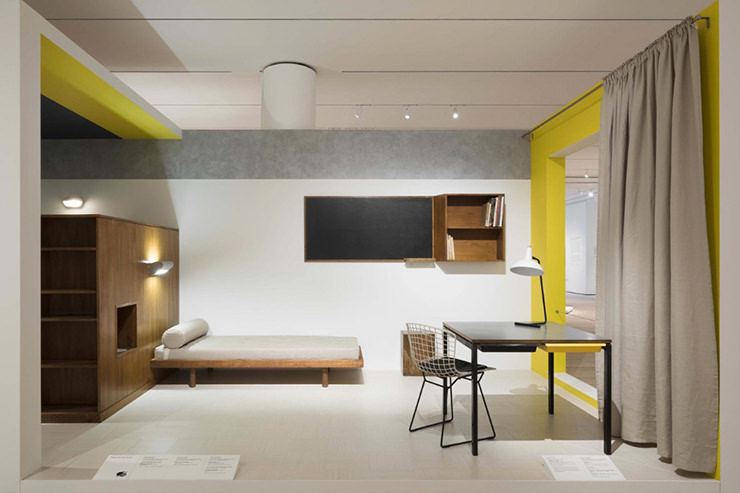 How Should We Live? Propositions for the Modern Interior, installation view at The Museum of Modern Art, New York. © 2016 The Museum of Modern Art
How Should We Live? Propositions for the Modern Interior, installation view at The Museum of Modern Art, New York. © 2016 The Museum of Modern Art
Last month we visited ‘How Should We Live? Propositions for the Modern Interior’ at The Museum of Modern Art, New York. The exhibition looks at the period of change experienced from the late 1920s to 1950s where certain radical designers, architects and manufacturers pushed the West towards a new way of living by questioning the status quo. Through presenting the era’s key examples of experimental design ‐ mined from MoMA’s extensive archive ‐ ‘How Should We Live?’ explains how experimentation in form, materials and production methods gave us the modern interior. These examples included a number of works by Eileen Gray.
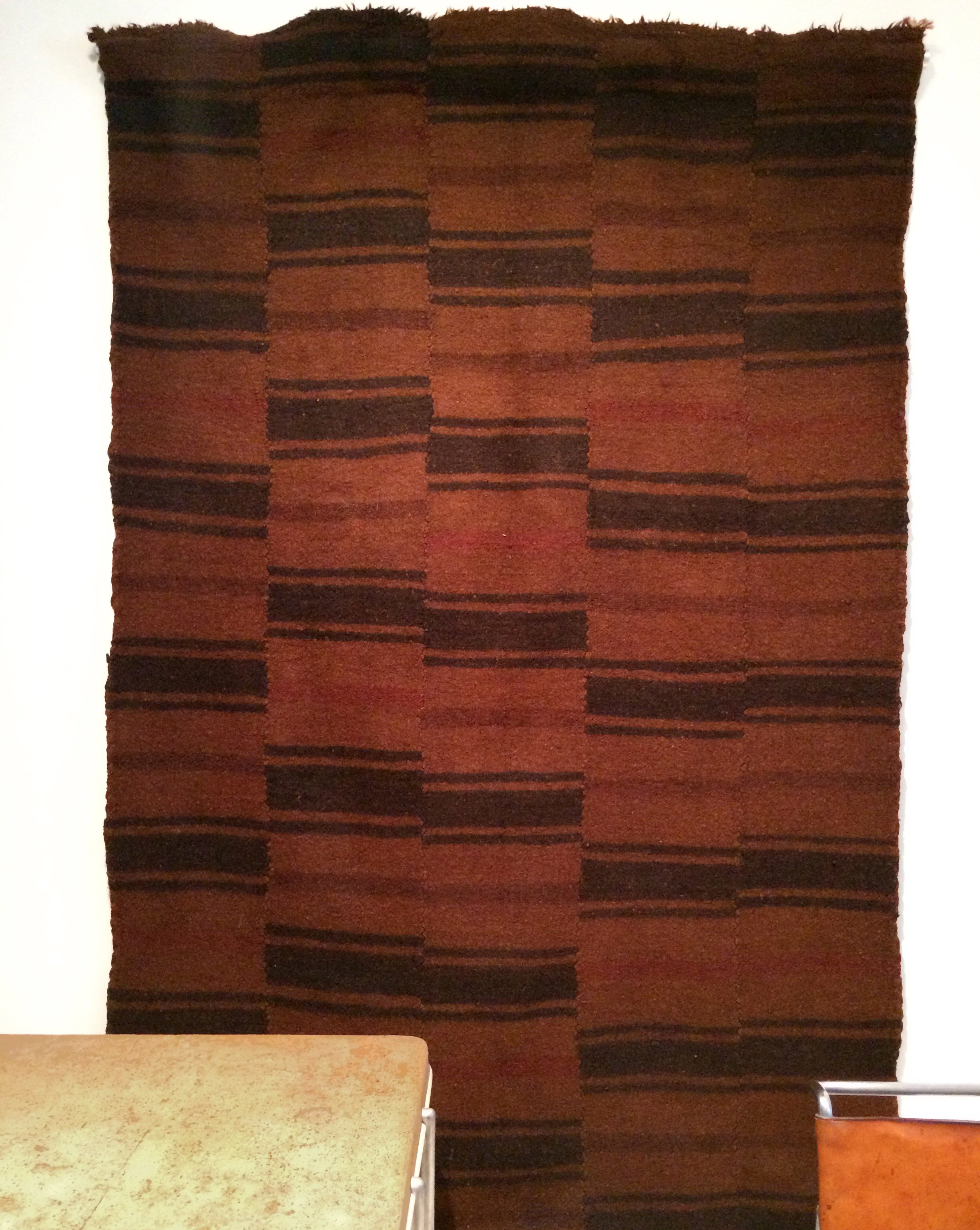 Eileen Gray ‐ Etoile de mer Carpet, c.1930
Eileen Gray ‐ Etoile de mer Carpet, c.1930
Gray designed handwoven rugs whose expressive tactility complemented the shimmering metallic surfaces and angular forms of her furniture. The example, woven in narrow strips combined in an irregular abstract design, reflects her preference for harmonies of ochres and browns and her experience of weaving traditions in Morocco. Before the First World War she had travelled to Northern Africa with her childhood friend Evelyn Wyld, and studied weaving and dyeing wool with natural colours. For about fifteen years, Wyld supervised Gray’s weaving workshop in Paris. – MoMA
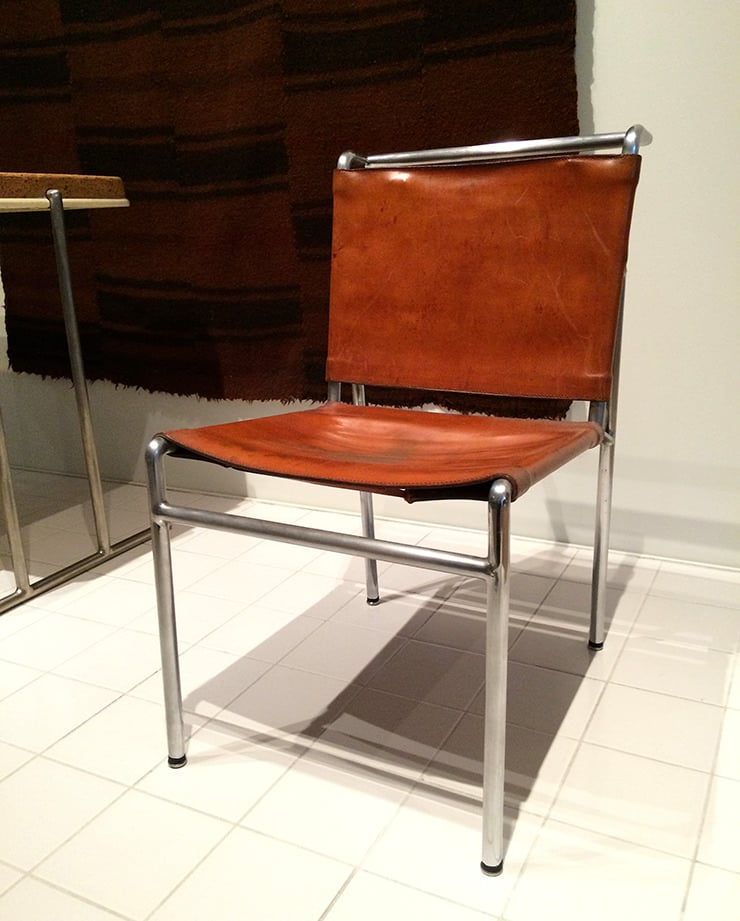 Eileen Gray ‐ Chair for Tempe à Pailla, c.1935
Eileen Gray ‐ Chair for Tempe à Pailla, c.1935
This chair was created for Tempe à Pailla, another house on the Côte d’Azur by Gray, which she designed and built after the end of her domestic relationship with Jean Badovici at E‐1027. – MoMA
Gray’s Roquebrune chair is a clear development of this design.*
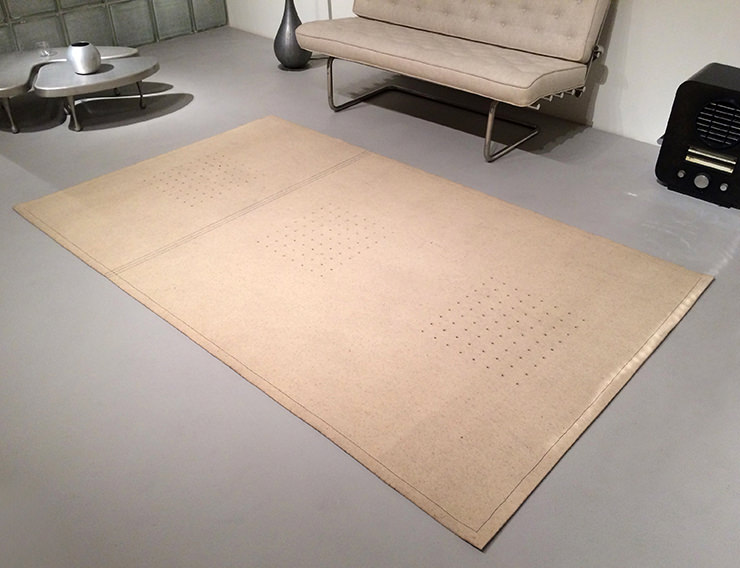 Eileen Gray – Felt Rug, c.1928
Eileen Gray – Felt Rug, c.1928
The exhibition spotlights other female creatives such as Aino Aalto and Ray Eames, whose achievements have often been overshadowed, or outright claimed by their male contemporaries. For many years the iconic LC range was largely attributed solely to Le Corbusier, when actually he had been impressed by Charlotte Perriand’s use of tubular steel in furniture design and invited her to develop this side of his studio. It is only in recent years that Perriand has begun to receive just credit.
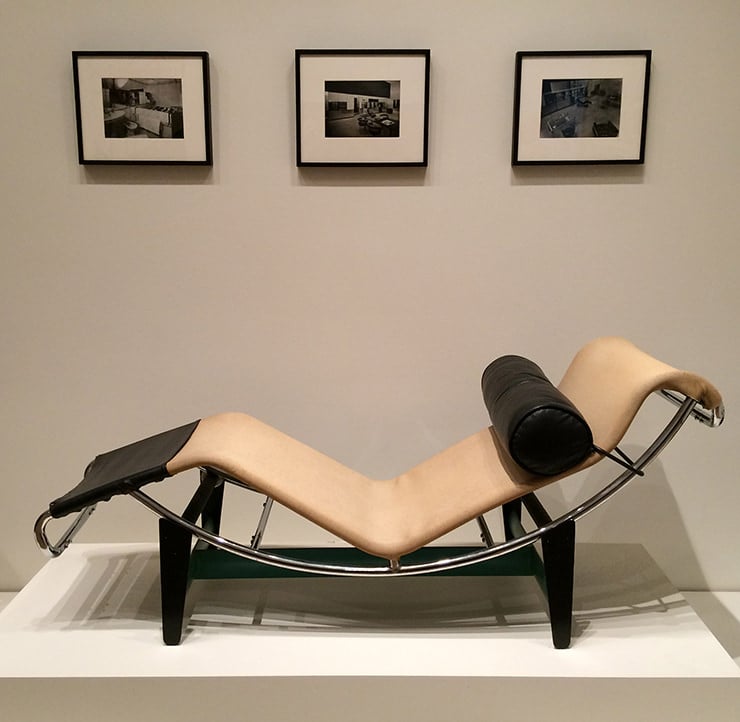 Le Corbusier (Charles‐Édouard Jeanneret), Pierre Jeanneret, Charlotte Perriand ‐ Chaise Longue (LC/4), c.1928
Le Corbusier (Charles‐Édouard Jeanneret), Pierre Jeanneret, Charlotte Perriand ‐ Chaise Longue (LC/4), c.1928
Inspired by bentwood chairs by Thonet and recumbent doctor’s chairs, the angle of repose on this chaise longue is adjusted by sliding the chromed steel frame on its stationary base. The LC/4 was a collaborative design spearheaded by Charlotte Perriand, who had designed other furnishings in tubular steel before joining Le Corbusier’s studio. – MoMA
The LC4 design continues to be commercially produced by Cassina.*
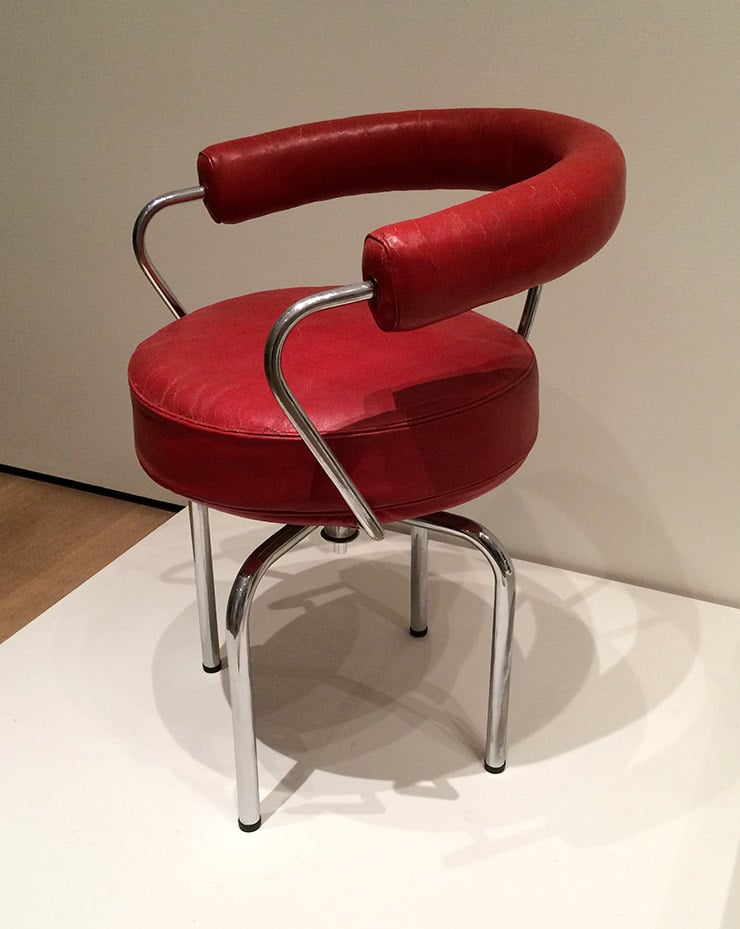 Charlotte Perriand, Le Corbusier (Charles‐Édouard Jeanneret), Pierre Jeanneret – Revolving Armchair, c.1928
Charlotte Perriand, Le Corbusier (Charles‐Édouard Jeanneret), Pierre Jeanneret – Revolving Armchair, c.1928
The modern version of this design is the LC7 chair, also produced by Cassina.*
After working with Corbusier, Perriand went on to live in Japan during the Second World War and brought her learnings of traditional craft and artisanal techniques into her industrial design practice. However Perriand wasn’t the only Western designer of the time to be influenced by Japanese aesthetics and MoMA highlights the connection through works by Junzō Yoshimura, Noémi Raymond and George Nakashima.
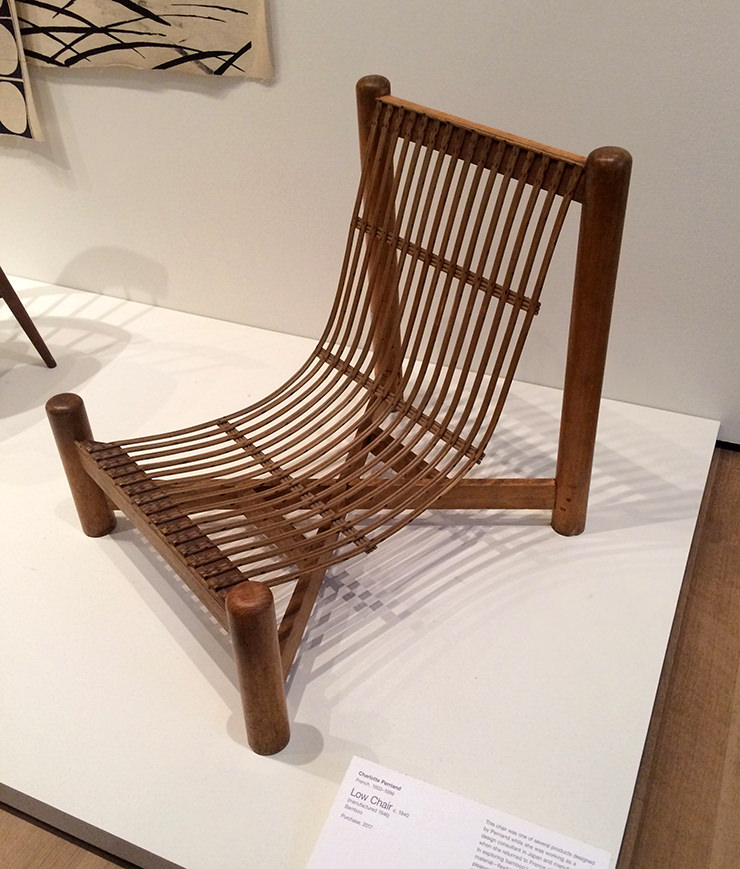 Charlotte Perriand – Low Chair, c.1940
Charlotte Perriand – Low Chair, c.1940
This chair was one of several products designed by Perriand while she was working as a design consultant in Japan and manufactured when she returned to France after the war. In exploring bamboo’s potential as a building material – flexible, light, strong, inexpensive, pleasant to touch, and resistant to woodworm – Perriand revisited some of her earlier furniture designs, including a low chair with a modular, cross‐shaped base system with cylindrical legs she had designed for the UAM pavilion at the 1937 Paris exhibition. This sturdy but flexible chair was meant to be used bare (in humid or warm weather) or with removable cushions that Perriand had upholstered in traditional kimono silk fabric. – MoMA
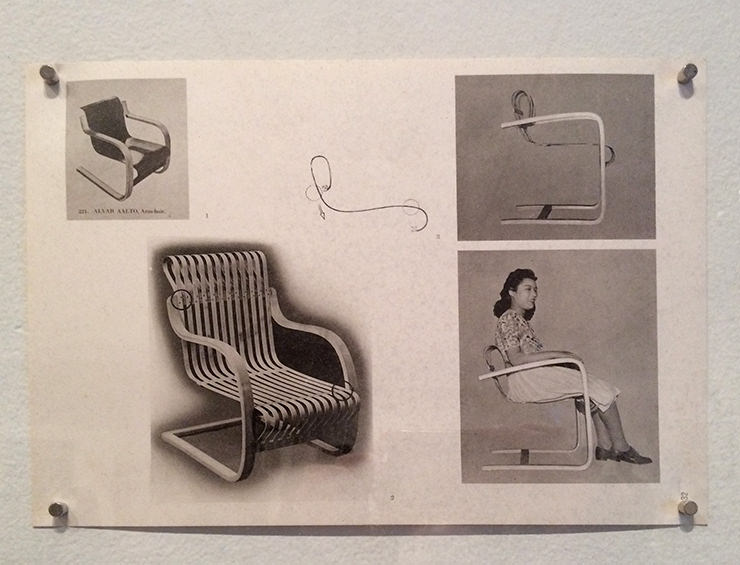 Charlotte Perriand, Junzō Sakakura – Sentaku, dentō, sōzō: Nihon geijutsu tono Sesshoku (Selection, tradition, creation: contact with Japanese art), 1941
Charlotte Perriand, Junzō Sakakura – Sentaku, dentō, sōzō: Nihon geijutsu tono Sesshoku (Selection, tradition, creation: contact with Japanese art), 1941
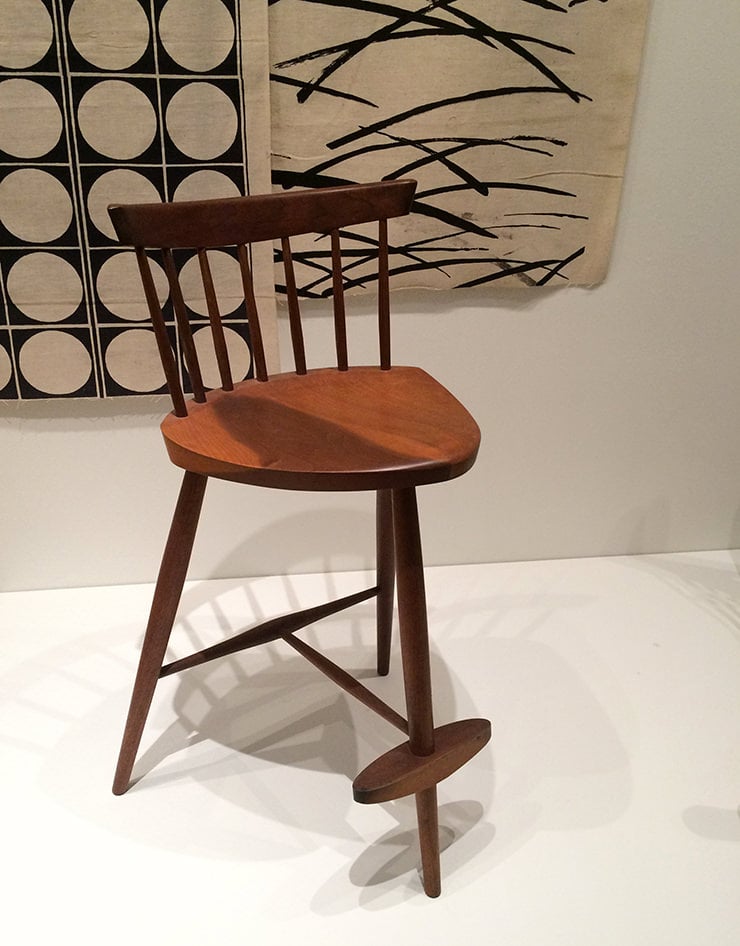 George Nakashima – Three‐Legged (Mira) Stool, c.1950
George Nakashima – Three‐Legged (Mira) Stool, c.1950
The exhibition – now in its final week – would of course not be complete without the inclusion of experimental prototypes by Charles and Ray Eames, avant‐garde works which are now synonymous with the modernist aesthetic.
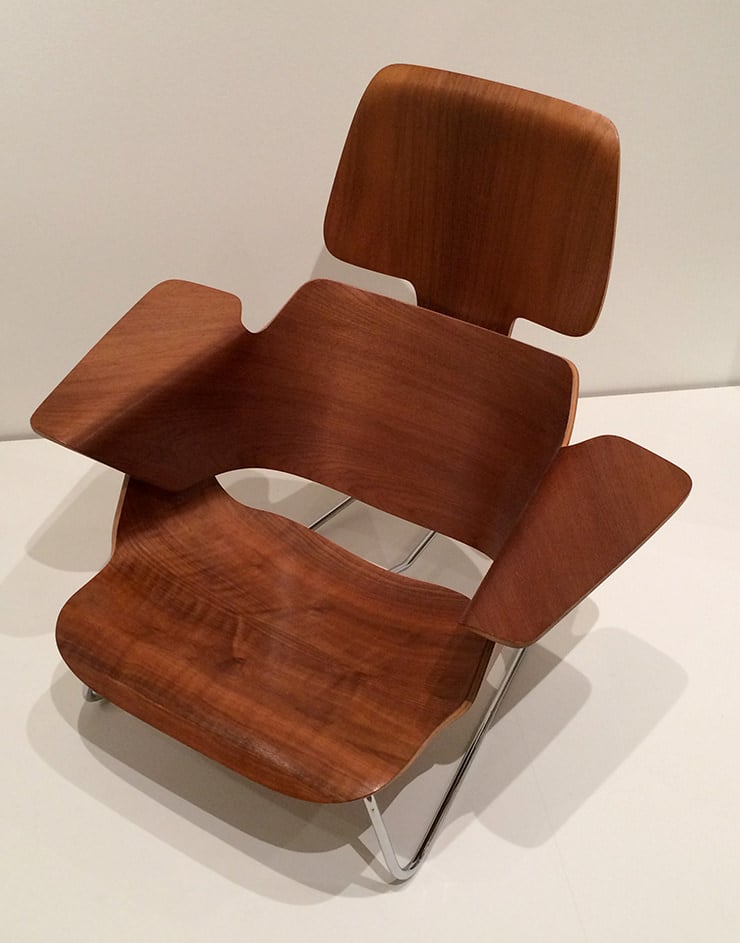 Charles Eames, Ray Eames ‐ Experimental Lounge Chair, c.1944
Charles Eames, Ray Eames ‐ Experimental Lounge Chair, c.1944
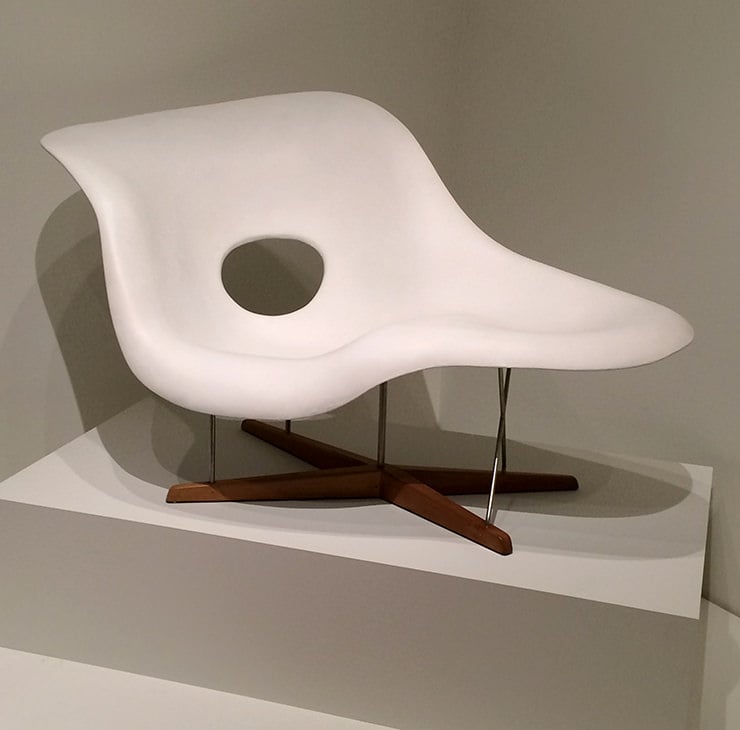 Charles Eames, Ray Eames – Prototype for Chaise Longue (La Chaise), 1948
Charles Eames, Ray Eames – Prototype for Chaise Longue (La Chaise), 1948
This chaise longue was inspired by Gaston Lachaise’s 1927 sculpture Reclining Nude and nicknamed after the artist. It did not receive a prize in MoMA’s International Competition for Low‐Cost Furniture Design because it was considered too “specialised in use” and too expensive to manufacture. However, it was highlighted by the judges, who admired its “striking, good‐looking and inventive” moulded construction. – MoMA
It took until 1990 for La Chaise to be commercially produced ‐ it’s still available today, manufactured by Vitra.*
How Should We Live? Propositions for the Modern Interior at The Museum of Modern Art, New York runs until Sunday 23 April 2017.
*All Cassina, Eileen Gray and Vitra current production models are available through Aram Store.